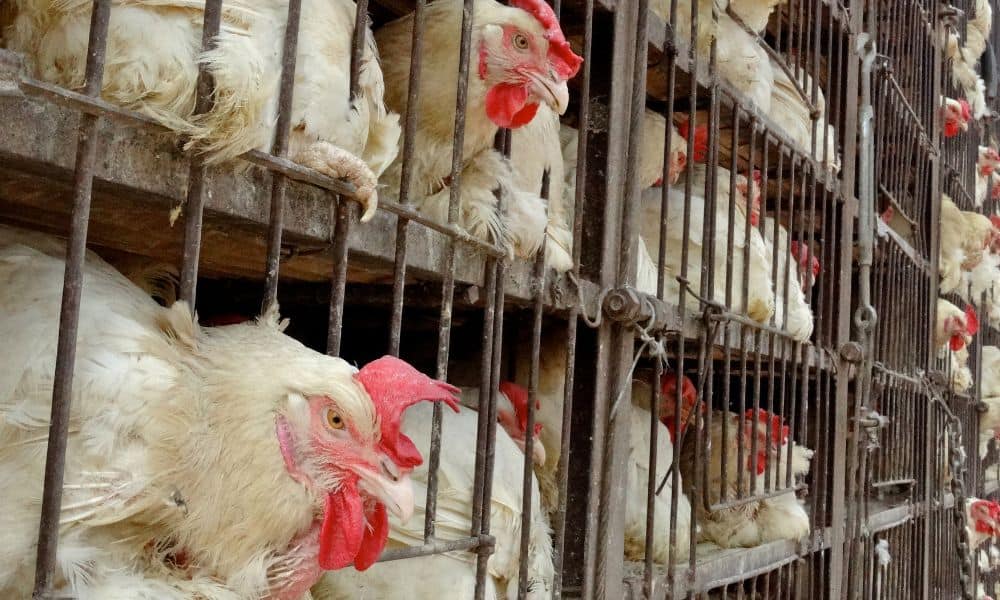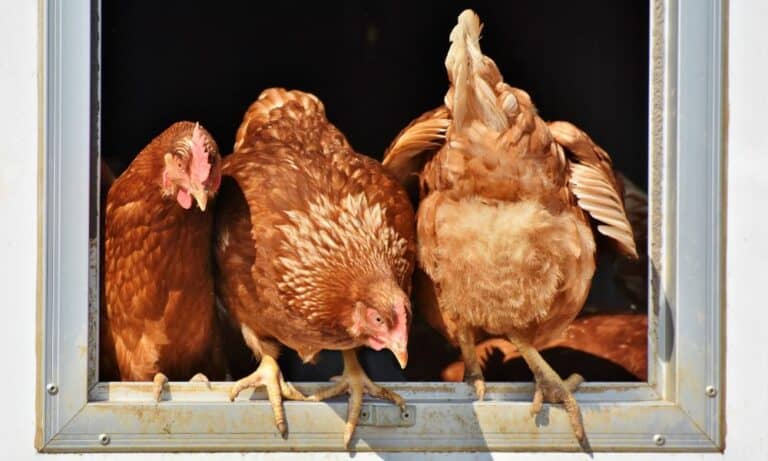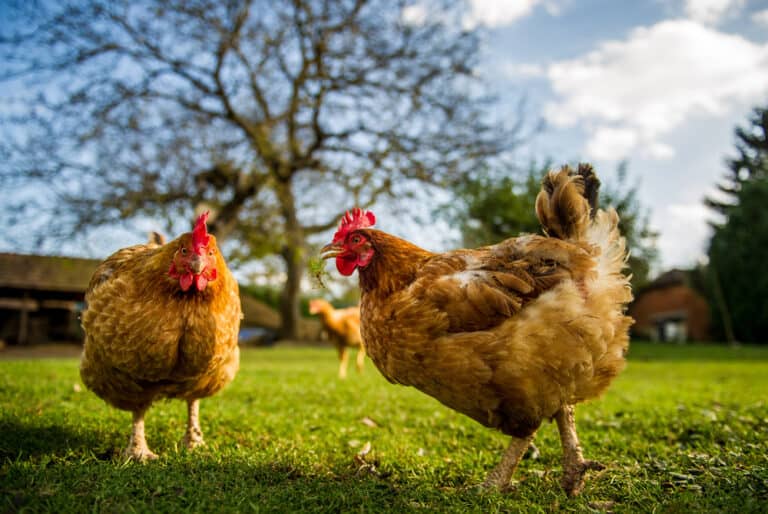Transporting chickens is a pretty stressful job and requires proper preparation, careful driving, and adequate rest for the flock once transportation is finished. Therefore, farmers often have a problem with how to transport chickens and organize the entire action.
In most cases, an unfamiliar environment, noise, and too much light can be too much for your flock. However, it is not the same if you need to transport ten or a hundred chickens, and you should find the most comfortable and least stressful way to finish the task successfully.
Preparations for Transporting Chickens
As expected, you should make extensive preparations for transporting poultry, especially if you have a large flock. Let’s take a look.
1. Choose the right vehicle
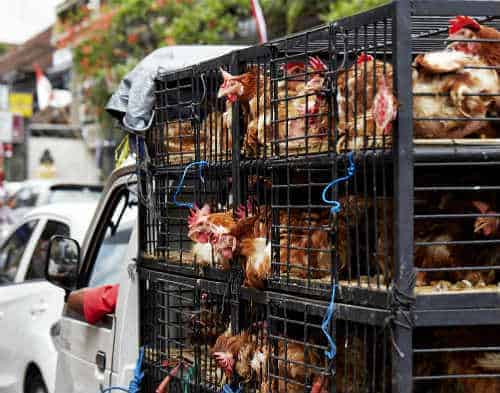
You can transport your chickens in three common ways, including:
- By car (approximately 5 to 10 chickens)
- In an SUV cargo space (not more than 20 chickens)
- In a truck (larger flocks)
- In the post (newborn chicks)
2. Chicken number

2 to 3 chickens – You need a small poultry crate or a sturdy, medium-sized cardboard box when transporting two to three chickens.
You should adequately seal it and place it in the car’s backseat. It is enough to add a portable drinker and small feeder inside and poke a finger-size hole on each side to provide the required airflow.
5 chickens – You can accommodate 3 to 4 chickens of an appropriate size in a tiny poultry crate. So, you need two boxes or one larger to carry all five together. Remember to divide them by temperament, weight, and size to prevent problems during transport.
10 chickens – You can pick out one of a few ways to transport ten chickens, and your decision should be based on journey length, fowl size, and the space they require. The best option is to separate them into four crates or boxes, providing one per 2 to 3 chickens.
You can also choose two sizable crates with dimensions of 30 by 22 by 4 inches (76 x 56 x 10 cm) to reduce stress in chickens by providing more space. One gives enough space for eight chickens, so five will travel this way comfortably.
20 chickens – Transporting a flock of over 20 chickens is demanding, so you should provide enough crates to pack as few chickens as possible per box. Provide four large crates and accommodate max five birds per each to allow undisturbed moving and feeding.
50 chickens – Transporting larger flocks requires more preparation and thorough pre-planning. Get enough commercial-grade poultry crates to increase safety and avoid overcrowding. Always lay crates horizontally first and then add the rest vertically to increase the stability of the construction.
Calculate to accommodate up to eight chickens per a 30 by 22 by 4 inches (76 x 56 x 10 cm) sizable crate, so it is enough to have 7 to 8 for 50 birds. Remember to add one to two smaller boxes for injured or vulnerable chickens.
100 chickens – Transporting over 100 chickens require a sizable vehicle, but you can also consider hiring a utility 5 by 8 feet (1.5 – 2.4 m) sizable trailer. It is enough space to place approximately 15 crates.
Carefully stack crates to provide enough airflow, particularly for those at the lowest level. Load them into the trailer early morning while your fowl is still calm and docile. Check each crate’s security and provide them with feeders and waterers.
3. Prepare crates
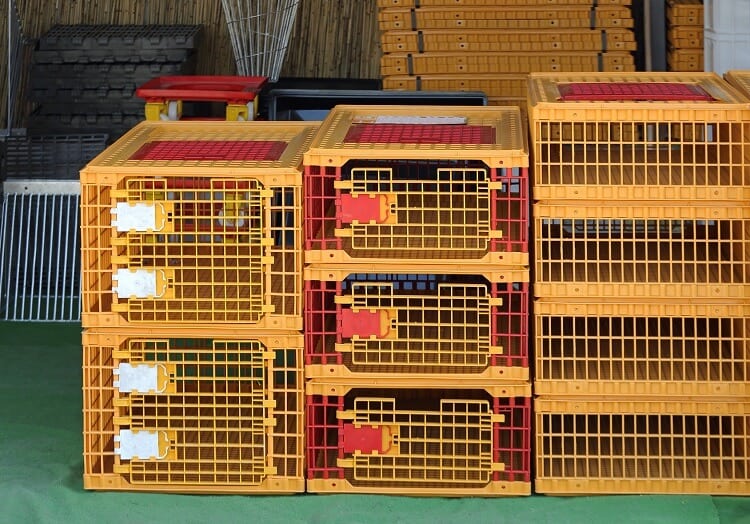
Choose proper carriers, depending on the flock size. You aim to provide excellent ventilation and enough airflow to keep the temperature at the required level and provide sufficient oxygen. Your options include the following:
- Chicken crates
- Cardboard boxes
- Dog carriers
- Cat carriers
- Rabbit cages
- DIY crates
No matter what type of cage you choose, it must be adapted to the number of chickens you want to transport. An average poultry crate is 48 inches long (1.2 m), 12 inches (30.50 cm) deep, and 36 inches (91.5 cm) wide.
If you prefer homemade boxes, remember that the minimal dimensions per bird should be 10 by 12 by 8 inches (25.5 x 30.50 x 20.3 cm).
Never place more than 12 birds in one standard poultry crate. Keep it clean, carefully load one chicken at a time inside, and let them calm down before adding another. Keep chickens in the dark to allow them to relax and sleep most of the time.
Fix and secure crates to prevent unnecessary movements and place chickens on solid ground. Consider insulating the flooring with shavings to make the traveling cozy or lay rubber mats under them to reduce too much shaking.
Additionally, place some towels, blankets, or linens over the crate tops to minimize noise and excessive lights. However, allowing enough space to provide proper ventilation is crucial, so pay particular attention to this issue.
4. Carefully choose travel mates
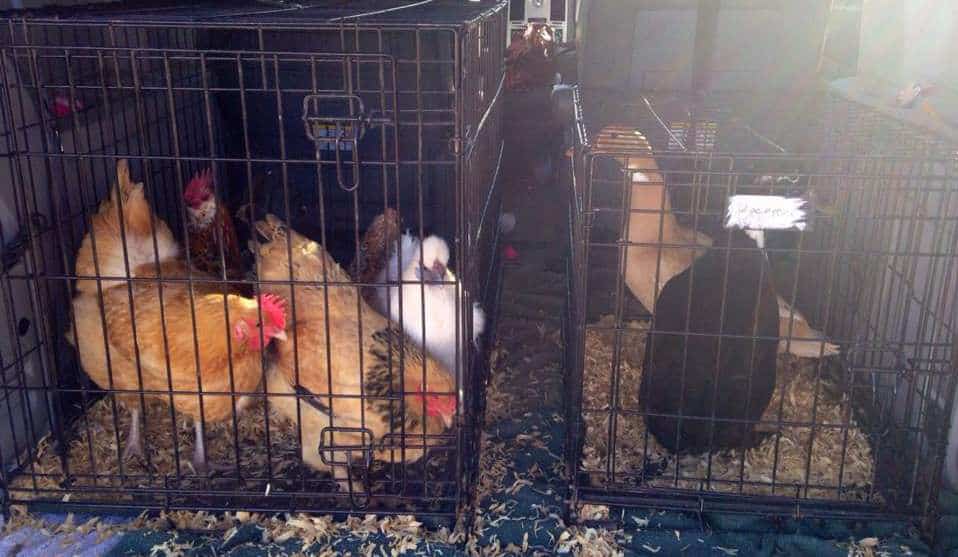
Strategically combine chickens in each crate to prevent aggression and isolate those with special needs. Take care to separate aggressive chickens and keep them alone in modified cardboard boxes.
5. Required supplies
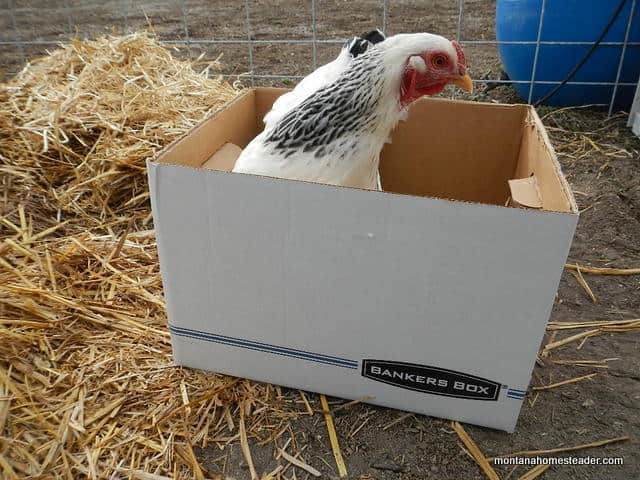
Chickens need safe traveling conditions to survive and successfully combat stress. Therefore, you should provide a few crucial things to make their transportation as comfortable as possible. Your flock needs a few things while on the road, including:
- Enough food and water
- Portable feeders and drinkers
- Healthy treats, like flock blocks
- Sprinkle scratch grain over the bedding for entertainment
- Adequate bedding, like pine needles or wood shavings
- Add soothing fragrant herbs, like lavender, sage, parsley, thyme, or oregano, for joy and stress-reducing
- Thin sheets, towels, or blankets over the crates
- Provide ventilation to keep a temperature at 60 to 75 F (15.5 – 24 C)
- Extra cardboard boxes for aggressive and ill chickens
6. Eliminate stress

The most common stress signs in chickens include:
- Reduced egg production
- Weight loss
- Susceptibility to disease
Your primary goal is to eliminate additional stress caused by transportation. Therefore, it is necessary to reduce it before and during the trip by:
- Boosting chicken immunity
- Checking whether the flock is healthy for transport
- Choosing a suitable way to transport your fowl
- Keeping vulnerable chickens separately
- Taking breaks along the way
7. Problems to avoid
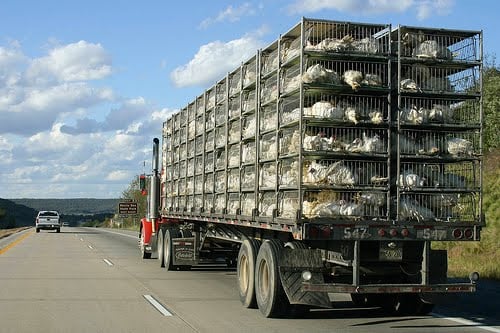
- Prevent overheating and frostbite
- Provide conditions to prevent escaping
- Avoid overcrowding to prevent suffocation
- Reduce stress to prevent illness, egg-laying reduction, and unacceptable behavior
8. Check state laws and local regulations

Timely check state laws and local regulations about crossing state lines when transporting chickens to another state. Sometimes, you need only a veterinary certificate, but some states require an NPIP certification.
The procedure can take a few months, so contact the American Veterinary Medical Association on time. They will help you with valuable pieces of information for a start.
Besides, be sure you can keep the flock in your yard when moving to a new town since some residential areas limit the number of chickens per household.
9. Limitations
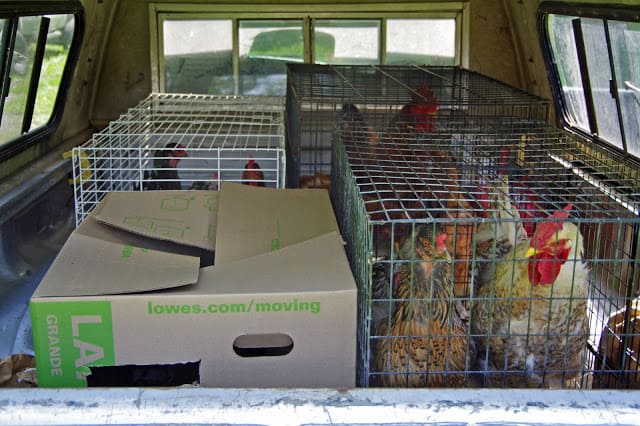
Never transport injured and sick chickens and avoid driving them in inadequate conditions, like:
- The vehicle trunk, closed trailer, or unsecured trailer back
- Inside a plastic bag or wooden crate
- In spaces with poor circulation
- Unprotected during lousy weather
- Wet chickens
- After spending a night in a vehicle
- Mixing poultry of different species, ages, and sizes
Traveling
Your best shot is to transport your fowl during the night to reduce their stress to an acceptable level. When it is impossible, and you need to transport them during the day, the crucial thing is to reduce movements, bumps, noise, and lights to a minimum.
10. Route
Plan the route away from gravel roads and without too many turns. Avoid busy roads, drive slowly, and regularly check your flock during transport. Drive at night whenever possible to reduce stress because of excessive lighting and noise on the road.
11. Food and water
There is no need to add a feeder and drinker into a crate when transporting chickens for a short trip lasting less than 15 minutes. However, providing enough water, food, and treats for long-lasting traveling is necessary.
12. Occasional stops
Make a break once per 100 to 200 miles (161 – 322 km) to check chickens for signs of exhaustion, distress, and injuries. Pour fresh water and add food when necessary.
13. Prepare the new home on time
Think in advance about the chickens’ enclosure in the new location. It is crucial to let your fowl rest and acclimate to new circumstances. The problem with fowl is that they hate changing their habits, so you should spend time with them and make them easy to adapt.
Be aware that hens may stop egg production for a while after transportation. Let them adjust to a new environment, and you can expect the first eggs within a few days. However, many chickens start molting as a reaction to the stress of the move, so expect that these hens may take a break in egg laying.
Summary
Transporting chickens can be stressful and require good planning and preparations. Reduce stress in the flock, accommodate them well, and provide enough water to keep them hydrated. The entire venture will be more effortless when your chickens are safe and travel in cozy and well-ventilated crates.

